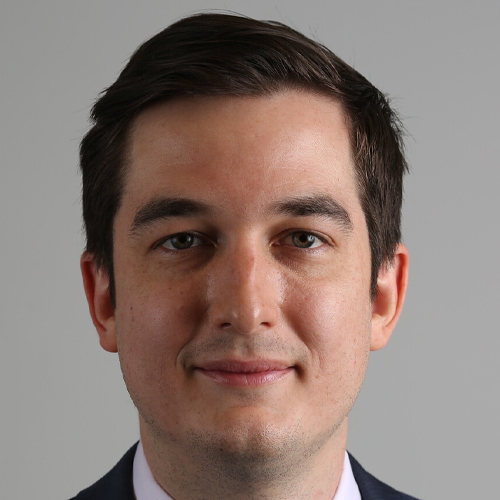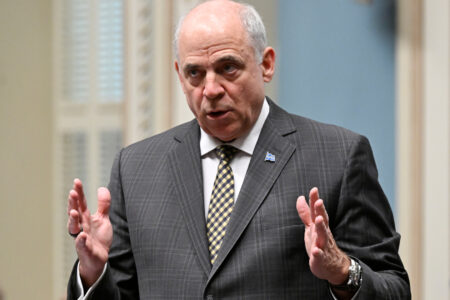
Communicators and public affairs professionals know first-hand about the negative impact that disinformation has had not only on our work, but on our friends and family as well. Our rapidly changing digital landscape is making this problem worse as it makes it harder and harder to tell what’s intentionally created to mislead and what is unintentionally misleading.
With Russia’s war on Ukraine coming into full focus, it’s time we realize that disinformation efforts aren’t just benign memes based on a difference of opinion – they are an effective time-tested weapon that Canada needs to start addressing in a serious way.
Disinformation is not new. The term “fake news” became popular in the 1890s and was recently revived to identify tactics used during the 2016 presidential election in the United States. The problem of disinformation has become only more acute since then as it rapidly metastasized from politics into all sectors of our society, ushering in what some call the “post-truth” era.
Unlike misinformation, which spreads false information with or without the intent to mislead, disinformation is an active attempt to mislead by deliberately creating and spreading false information. These disinformation attacks destroy the trust that people feel for each other and their institutions.
The powerful effect of disinformation can be seen clearly in Canada with the occupation of downtown Ottawa. Locked into an echo chamber of conspiracy theories fueled by disinformation, occupiers confronted reporters as liars as the occupiers repeated false information about vaccinations. These protests quickly spread across the country and paralyzed several of Canada’s major trading routes before finally being reigned in by law enforcement.
This event should be a wake-up call to all Canadians that we need to act quickly to address the active threat of disinformation. While some provincial education curriculums provide for media literacy courses in school, none of them are mandatory, many of them are out of date with the current digital environment, and there isn’t a consistent approach across the country.
Convoys and protests: Anti-lockdown mobilization grows in Canada
Navigating the age of information warfare
The trucker protests and the blatant failure of citizenship education
Organizations such as MediaSmarts and the Canadian Association of Journalists are trying to fill that gap through additional education campaigns. However, Canada lacks the data needed to understand what students are learning from media literacy education, so we can’t be sure if Canada’s approach is effective.
Disinformation will continue to pose a major threat to Canada and other countries as Russia’s war against Ukraine continues. Russia is currently using co-ordinated disinformation attacks by utilizing the communication channels of their embassies in many countries to accuse Ukraine of bombing their own maternity hospital in Mariupol as well as to claim the massacre of civilians in Bucha was faked by Ukraine and its Western allies
Canada is locked into a reactive approach
In Canada, we are currently locked into a reactive approach to addressing disinformation after it has already spread.
With social media sites being one of the main sources of disinformation, we have also seen companies such as Twitter and Facebook begin to de-platform, cut off advertising revenue to, and put warnings on accounts that spread disinformation.
Since the war in Ukraine was renewed by Russia, Twitter has put warning labels on 260,000 tweets from Russian accounts and says it will continue this practice. But this reactive approach only happens after the disinformation has spread to its intended audience.
International fact-checkers such as Daniel Dale, a reporter for CNN, formerly of the Toronto Star, and news organizations such as AFP play an important role in our society by holding those presenting false information publicly accountable for their actions. However, just like the reactive approach of social media websites, it is becoming clear that there are limitations to relying on this approach to address disinformation.
We know that fact-checkers can help to correct inaccurate information and improve the accuracy of the audience’s knowledge of a subject, but that effectiveness is limited in polarized instances such as election campaigns. With the stakes so high during elections, this a major limitation, given that this is when we need to address disinformation the most.
There is technology that is being explored as a way to automate fact-checking so this information can be taken down quicker. However, this technology isn’t close to being ready and is still dependent on human judgment.
Adding to the problem, conspiracy theorists are now using fact-checkers as the basis for their new disinformation campaigns. As seen in this interview, Stew Peters, a conspiracy theorist who promoted the occupation of Ottawa, claims that “the arbiters of lies are the fact checkers.”
How have other countries dealt with disinformation attacks?
In 2007, Estonia was paralyzed as it experienced two days of riots due to a Russian disinformation campaign centred around the moving of a Soviet Union military statue. But instead of submitting to the major geo-political power of Russia, Estonia acted.
In 2010, it began teaching media literacy from kindergarten to high school. The genius behind this shift is that it’s integrated throughout the curriculum.
In Estonia, media literacy is now treated with the same importance as science and math, with students in the 10th grade having to complete a 35-hour media and influence course. Additionally, its curriculum stresses digital competencies to assess media’s relevance and reliability, as well as how to be aware of the dangers of our new digital environment.
In a similar way, Finland was facing disinformation attacks from its Russian neighbour relating to NATO membership, immigration and the European Union. But instead of relying on fact-checkers to fight back, it launched an anti-fake news initiative in 2014 to teach its citizens how to counter disinformation.
This effective approach helps people to address disinformation at a very young age, before it can take hold of its audience. Or as Jussi Toivanen, the chief communications specialist for the Finnish prime minister, said in a 2019 interview with CNN: “The first line of defense is the kindergarten teacher.”
The courses in Finland are used to help students think critically about the news and facts they are consuming. Students are tasked with examining news sources, videos and social media posts to analyze bias by comparing them. They are even asked to try to write fake news stories themselves.
With Finland ranking first and Estonia ranking third in Open Society Institute’s 2019 Media Literacy Index, it’s evident that these programs are working.
What can Canada do?
Without a consistent approach to media literacy education across Canada, we are falling behind and leaving future generations vulnerable to disinformation attacks. The void of data on the different approaches the provinces are taking prevents us from improving our current models.
As in addressing any emergency, we need a serious, consistent, Canada-wide proactive approach to arm future generations with the power to see through disinformation. This is vital to improving our political discourse and preventing flash points such as the occupation of Ottawa in the future. With proven models being demonstrated in Estonia and Finland, it’s time to begin implementing a proactive approach.
By adopting a similar education curriculum in Canada, institutions can begin the process of gaining back trust and proactively addressing future disinformation efforts by equipping future generations with the knowledge and skills to think critically, not cynically, about the world around them.










